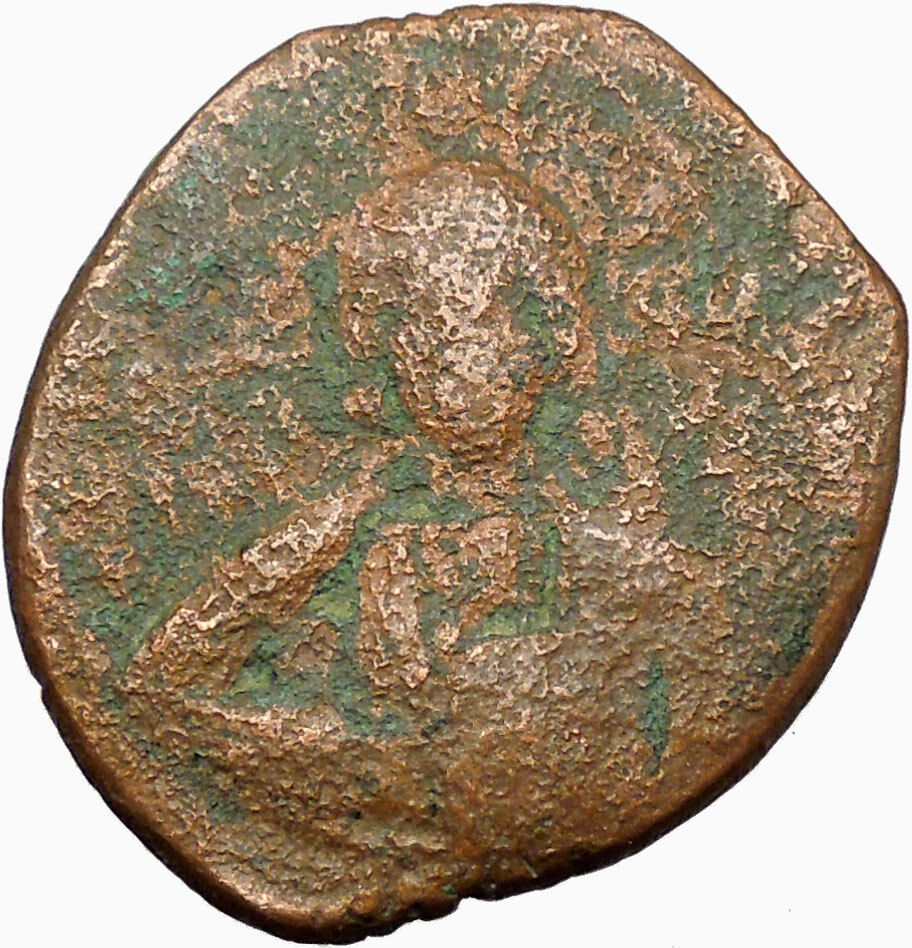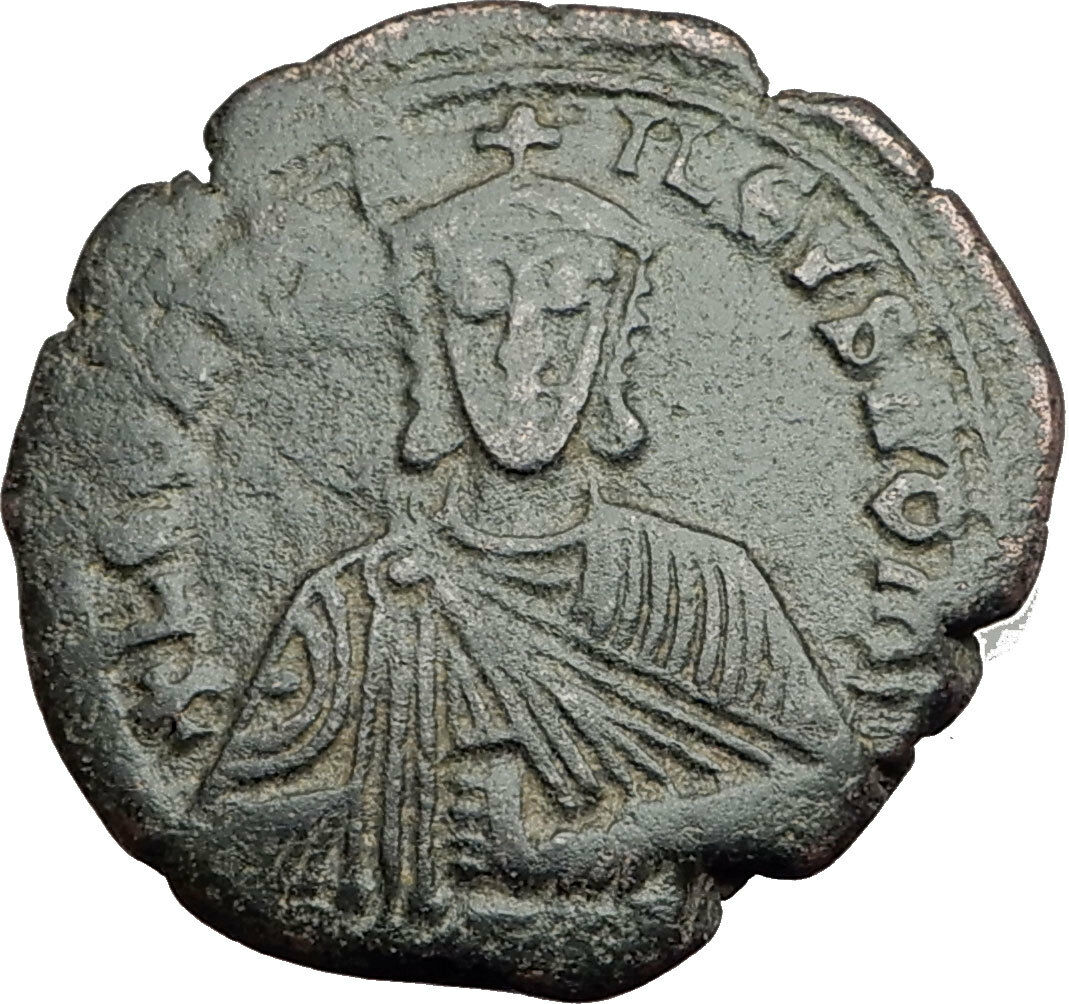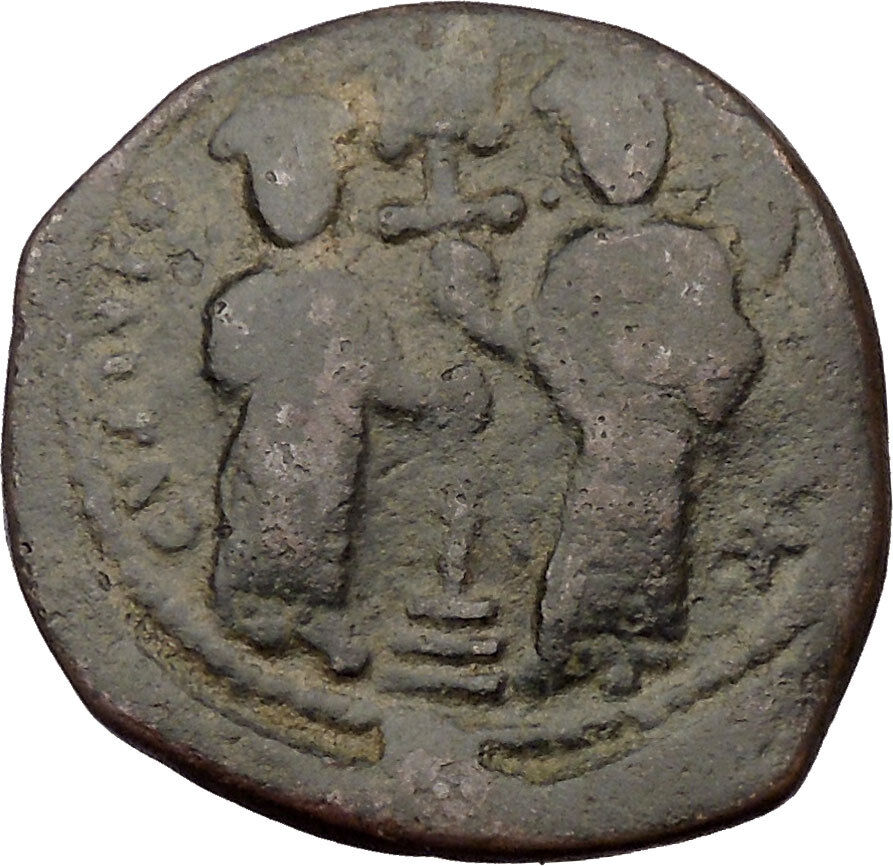|
Byzantine Empire
Tiberius III, Apismar – Emperor: 698-705 A.D.
Gold Solidus 20mm (4.40 grams) Constantinople mint, 3rd officina
Reference: Sear 1360
Certification: NGC Ancients MS Strike: 4/5 Surface: 3/5 5746398-007
Pedigree / Provenance: Ex CNG, 106 (13 September 2017), lot 878
D TIbЄRI-VS PЄ-AV, crowned and cuirassed bust of Tiberius III facing, with short beard, transverse spear across chest in right hand, shield on left arm decorated with horseman motif.
VICTORIA-AVSЧ Γ / CONOB, cross potent set on three steps.
You are bidding on the exact item pictured, provided with a Certificate of Authenticity and Lifetime Guarantee of Authenticity.
Tiberius III ( Latin: Tiberius Augustus; d. 15 February 706) was Byzantine emperor from 698 to 21 August 705. Although his rule was considered generally successful, especially in containing the Arab threat to the east, he was overthrown by the former emperor Justinian II and subsequently executed.
Rise to power
Tiberius was a Germanic naval officer from the region of Pamphylia and originally named Apsimar (Αψίμαρος, Apsímaros), who rose to the position of droungarios of the Cibyrrhaeotic Theme. He participated in the failed campaign to regain Carthage in 698. As admiral John the Patrician retreated from Carthage to Crete, the fleet rebelled, deposed and murdered their commander, and chose Apsimaros as his replacement. Changing his name to Tiberius, Apsimaros sailed on Constantinople which was suffering from a plague and proceeded to besiege it.
His revolution attracted the support of the Green faction, as well as detachments from the field army and the imperial guard, and officers loyal to him opened the gates of the city and proclaimed him emperor, after which his troops then proceeded to pillage the city. When he was firmly established on the throne, he commanded that the nose of deposed Emperor Leontius be cut off, and ordered him to enter the monastery of Psamathion. Leontios had also mutilated his predecessor Justinian II in the same fashion three years earlier.
Reign and deposition
As emperor, Tiberius III made the tactical decision to ignore Africa, where Carthage was now definitively lost. Instead, he appointed his brother Herakleios as monostrategos of the East, who firstly strengthened the land and sea defences of Anatolia[6] before proceeding to attack the Umayyad Caliphate under Abd al-Malik, winning minor victories while raiding into northern Syria in 700 and 701. He then proceeded to invade and for a period hold territory in Armenia, while Arab reprisals in 703 and 704 were repelled from Cilicia with heavy Arab losses.
Success in the military sphere was accompanied by Tiberius’s attempt to strengthen the empire militarily by reorganizing its administration. Tiberius then turned his attention to the Island of Cyprus, which had been underpopulated since the reign of Justinian II. He sent a delegation to the Caliph at Damascus, asking for the return of many Cypriot prisoners who had been captured near the Propontis, and subsequently returned them to their place of birth. He strengthened the defence of the island at the same time by increasing the garrison numbers with troops from the Taurus Mountains. He also reorganized the Cibyrrhaeotic Theme and repaired the sea walls of Constantinople.
Domestically, his only known act of note was the banishment of Philippikos Bardanes, the son of a notable patrician, to the island of Cephalonia. Philippikos, a future emperor, had dreamed that his head was overshadowed by an eagle, which Tiberius took to mean that he was planning to rebel against him.
Meanwhile, in 704 Justinian II escaped from exile in Cherson, seeking the aid of the Khazars and leading an army with the Khazars to Constantinople. For three days, Justinian tried to convince the citizens of Constantinople to open the gates, but to no avail. In the meantime, his troops had discovered a long abandoned water conduit beneath the city walls, through which Justinian and some of his supporters managed to enter the city. Hearing that Justinian had approached Constantinople in the night, Tiberius fled to Bithynia where he evaded capture for several months.
With his capture, Tiberius, together with his brother Heraclius and the former emperor Leontius, were paraded in chains through the city streets before being presented before Justinian in the Hippodrome of Constantinople. There, before a jeering populace, Tiberius’s nose was cut off. Justinian placed his feet on the necks of Tiberius and Leontius in a symbolic gesture of subjugation before ordering their execution by beheading. Tiberius’s brother, Heraclius, and many of the military commanders under him were subsequently hanged.
|














